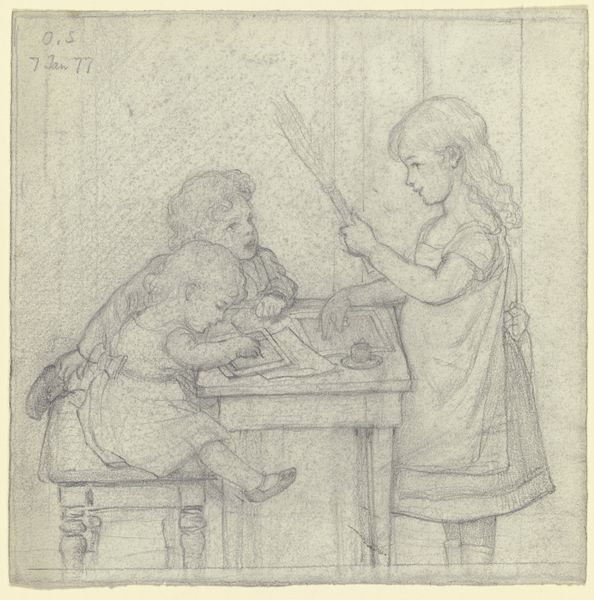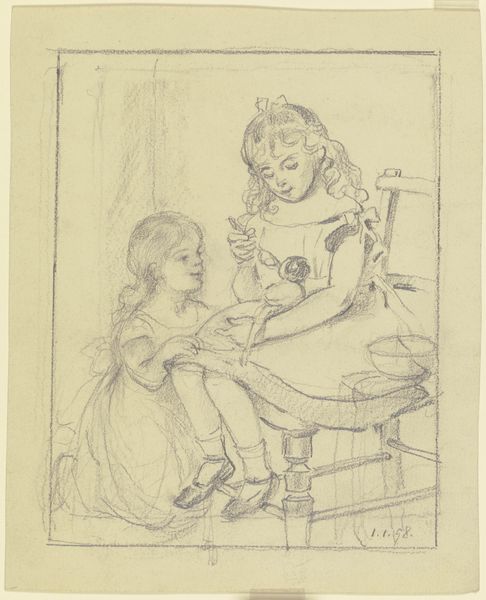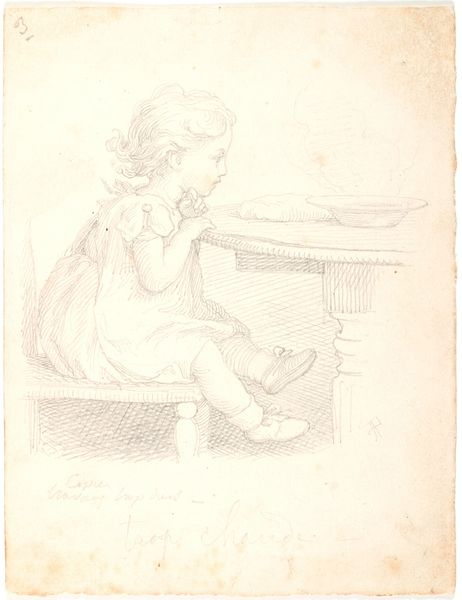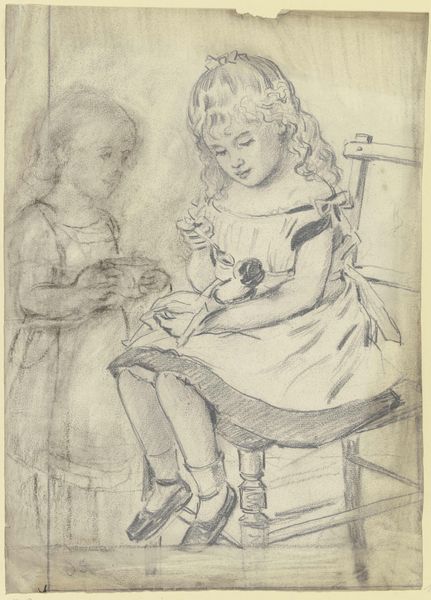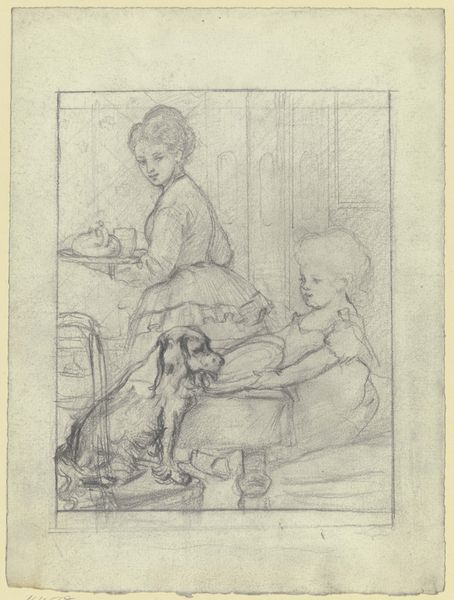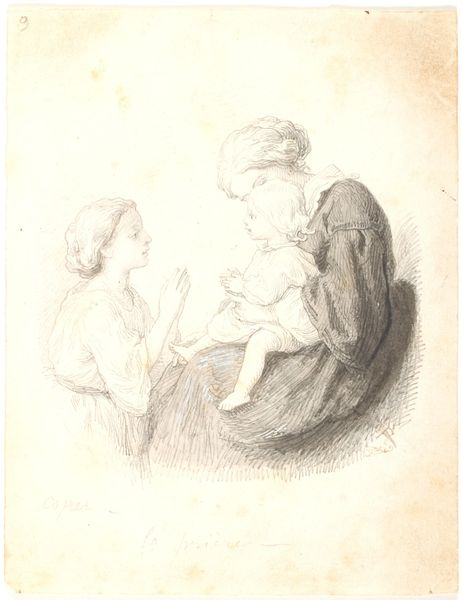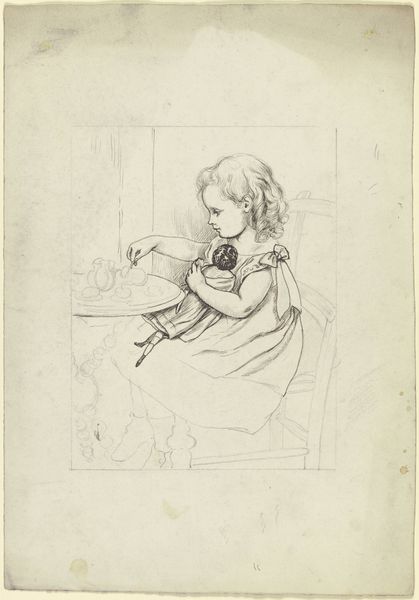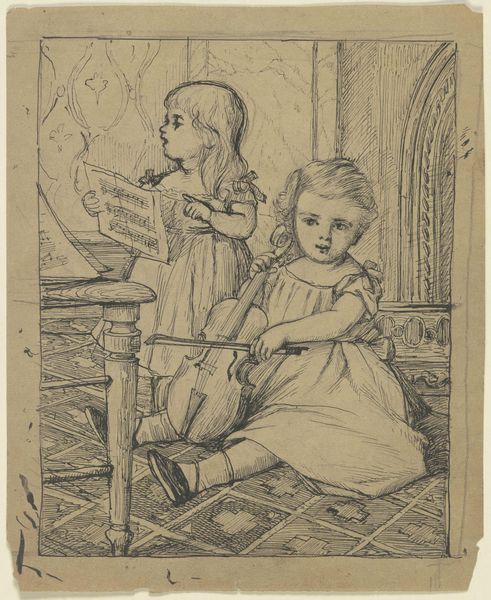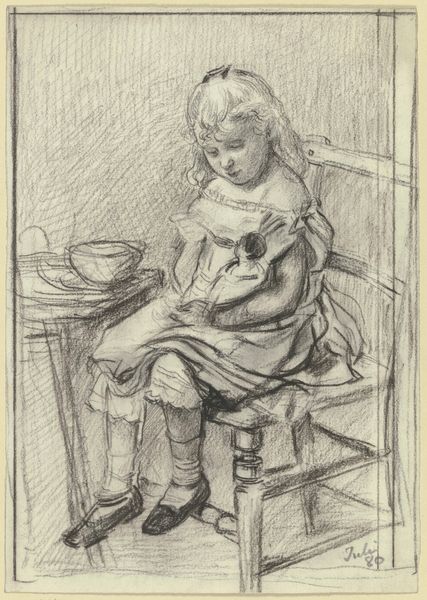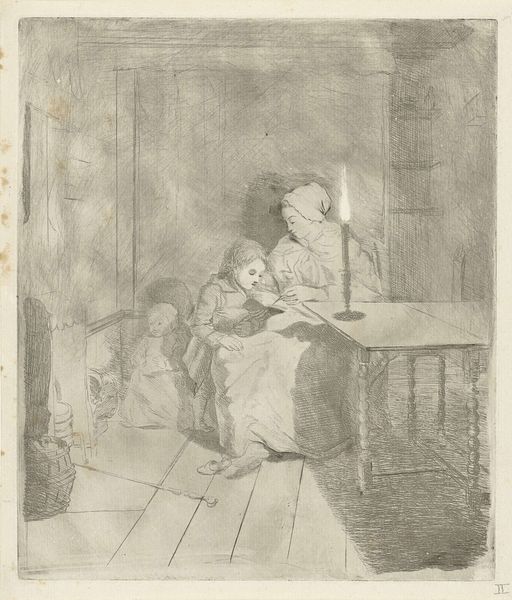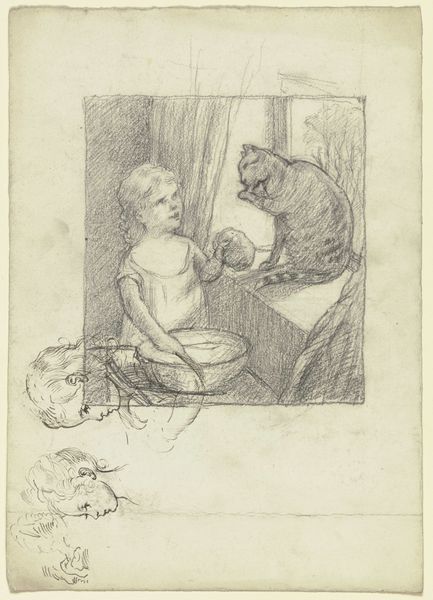
Copyright: Public Domain
Curator: Here we have Otto Scholderer's "Acted School Scene," a pencil and ink drawing on paper, created around 1877. It offers us a glimpse into the artist's domestic world. Editor: It strikes me as an intimate and somewhat nostalgic sketch. The soft lines and muted tones create a sense of gentle observation, almost like peering into a memory. Curator: Scholderer was part of a circle of artists interested in Realism, moving away from the grand historical narratives towards more everyday scenes. What we see here aligns with the broader artistic shift to capture contemporary life. Editor: Precisely. Notice how Scholderer depicts this scene of domestic education; we could discuss who has access to learning. What assumptions did he and his viewers hold about this scene of instruction? Is this sentimental, a slice of real life, or something else entirely? Curator: That tension is crucial. The staging, though seemingly simple, invites us to consider how knowledge and social roles are being transmitted within the family unit. Scholderer situates learning in the everyday. Editor: Absolutely. It prompts a dialogue around access, gender, and class within 19th-century European society. What sort of values did this model teach and transmit, both verbally and nonverbally? Who gets to decide on curricula? The scene feels very much framed through a particular social lens. Curator: Indeed. And we mustn’t overlook the material realities of producing such a work. Paper was becoming more accessible, impacting the art world by lowering its barrier of entry, changing the nature of artistic practice and contributing to how artists like Scholderer approached their work. Editor: Considering the history of art, particularly women artists, a lot could be said here. A female model and instructor raises interesting historical questions when juxtaposed with gender disparities of the time. Curator: It certainly adds another layer of interpretation to what might appear at first glance as a straightforward domestic tableau. Editor: In short, this seemingly modest drawing becomes a compelling entry point into much larger questions about history. Curator: Agreed. It serves as a testament to how even a small-scale work on paper can encapsulate complex cultural narratives.
Comments
No comments
Be the first to comment and join the conversation on the ultimate creative platform.
